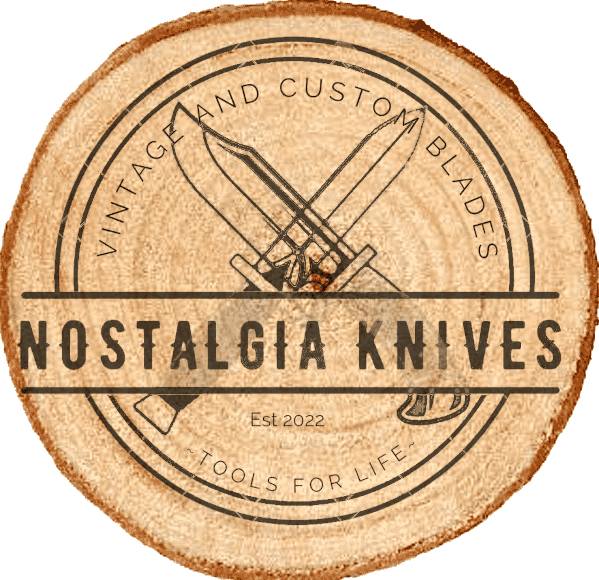Crafting Tools from Earth: The Art of Native American Stone Blades.
Posted on November 19, 2023 by congo
Crafting Tools from Earth: The Art of Native American Stone Blades.
Introduction:
Long before the arrival of European settlers, Native American tribes across North America mastered the art of crafting tools and weapons from the earth itself. One of the most ingenious and enduring techniques involved the use of rocks to create blades for knives and spears. This article explores the fascinating world of Native American stone blade craftsmanship, shedding light on the methods, materials, and cultural significance behind these remarkable creations.
Materials and Selection:
Native American artisans carefully selected stones for their blades, considering factors like hardness, durability, and workability. Flint, chert, obsidian, and other volcanic rocks were among the preferred materials due to their ability to fracture predictably, allowing for precise shaping. Each stone type had its unique qualities, influencing the characteristics of the final blade.
The Art of Flintknapping:
The primary technique employed by Native American craftsmen for shaping stone blades was flintknapping. This intricate process involved striking a stone (often with another stone or antler) to produce controlled fractures, creating razor-sharp edges. The skill of flintknapping was passed down through generations, with artisans developing an intimate understanding of the materials and the techniques required to transform them into functional tools.
Types of Stone Blades:
- Projectile Points (Arrowheads): One of the most iconic uses of stone blades was in crafting arrowheads. These points, meticulously shaped and sharpened, played a vital role in hunting and warfare. The design and size of arrowheads varied among tribes, reflecting regional preferences and intended uses.
- Knife Blades: Stone blades were also fashioned into knives for a myriad of daily tasks. Whether for butchering game, cutting materials, or even ceremonial purposes, Native American knives showcased a diversity of shapes and sizes based on the needs of the particular tribe.
- Spear Points: Larger stone blades were fashioned into spear points, serving as formidable hunting tools and weapons in times of conflict. Spear points were often larger and thicker than arrowheads, designed to withstand the impact of thrusting or throwing.
Regional Variations:
The art of stone blade crafting exhibited remarkable regional variations among Native American tribes. The availability of different types of stone influenced the choices of materials, leading to distinct styles and techniques. For instance, tribes in the Great Plains might favor chert for its abundance, while those in the Pacific Northwest might prefer obsidian for its sharpness.
Cultural Significance:
Beyond their practical utility, stone blades held profound cultural significance for Native American tribes. Crafting these tools was a skill that connected individuals with the earth, emphasizing a harmonious relationship with nature. The creation of blades often involved ceremonial rituals, acknowledging the spiritual importance of these tools in daily life, hunting, and warfare.
Legacy and Preservation:
The legacy of Native American stone blade craftsmanship endures in archaeological sites, museums, and the continued practices of contemporary flintknappers. The preservation of this heritage is crucial for understanding the resourcefulness, ingenuity, and cultural depth of Native American tribes. Archaeological finds provide insights into the evolution of stone blade designs and their adaptation to changing environments over time.
Conclusion:
The art of crafting knives and spears from stone was an integral part of Native American life, reflecting a deep connection between the people and the natural resources around them. The meticulous craftsmanship of these stone blades served not only practical purposes but also held spiritual and cultural significance. As we delve into the world of Native American stone blade crafting, we unveil a rich tapestry of skills, traditions, and the timeless ingenuity of a people who shaped their tools from the very earth beneath their feet.
Category: Blade Talk, History & Legacy
Free Shipping on orders over $79.00
- - USA only
- - USPS Flat Rate
- - Not valid with other promotions
Make An Offer!
- - Button only visible to logged in users.
- - Unreasonable offers will be dismissed.
- - Submitting an offer is not a commitment to purchase.
- - Some items excluded from Make Offer feature.
Category Menu
- Under $109696 products
- Camp/Scout Knives3737 products
- Chef Knives33 products
- Collectible Knives335335 products
- True Nostalgia2323 products
- Damascus Knives3434 products
- Everyday Carry[EDC]427427 products
- Fixed-Blade5454 products
- Folding-Blade440440 products
- Straight-Razor11 product
- Pocket Knives397397 products
- Hunting Knives7878 products
- Money Clip Knives22 products
- Multi-Tool Knives4848 products
- Novelty Knives3737 products
- The Barrel33 products
- By Manufacturer388388 products
- Amica11 product
- Anvil Brand44 products
- AutoPoint22 products
- Bear MGC11 product
- Bear & Son Cutlery11 product
- Böker1212 products
- Böker Solingen66 products
- Boker USA33 products
- Boker Plus22 products
- Browning Knives22 products
- Buck knives22 products
- Buck Creek11 product
- CamCo33 products
- Camillus Cutlery2727 products
- Case XX™2626 products
- Cattaraugus Cutlery Co.33 products
- Cherokee11 product
- Clauss Cutlery11 product
- Colonial Knives1818 products
- Coyote Prov. USA11 product
- Ranger11 product
- Columbia River11 product
- Comanche11 product
- Craftsman55 products
- Crowing Rooster11 product
- Cuda11 product
- Custom/Handmade3232 products
- CutCo11 product
- E.C. Simmons Cutlery Co.11 product
- Elk Ridge11 product
- ESEE11 product
- F.A. Bower Imp. Co.11 product
- Federal Knife Co.33 products
- Johnston USA11 product
- Frost Cutlery1515 products
- White Tail11 product
- Steel Warrior55 products
- Frost Family11 product
- G.C. & CO Mora, Sweden11 product
- Gerber44 products
- Gerson Co. Boston11 product
- Hammer Brand66 products
- Hen & Rooster™1010 products
- HIT USA11 product
- Imperial3333 products
- iPak11 product
- IXL George Wostenholm11 product
- J.B Rand & Co.11 product
- John Primble11 product
- Johnson Western Works11 product
- Ka-Bar22 products
- Keen Kutter11 product
- Kent22 products
- Kentucky Cutlery44 products
- Eagle Edge44 products
- Kissing Crane11 product
- Klein Tools Inc.44 products
- Lark33 products
- Latama11 product
- New York Knife Co.22 products
- Old Forge Knives11 product
- Other Knives22 products
- Owl Head22 products
- PAL Cutlery Co.11 product
- Parker Cutlery Co.11 product
- PIC11 product
- Providence Cutlery66 products
- Puma33 products
- Queen Cutlery Co.11 product
- Remington22 products
- Ridge Runner11 product
- RILL Simple Tools11 product
- Rite Edge11 product
- Robeson Cutlery33 products
- Rough Rider33 products
- Royal Brand Cutlery11 product
- Sabre22 products
- Schrade3232 products
- Old Timer1717 products
- Uncle Henry66 products
- Sears55 products
- Seki22 products
- Sharp33 products
- Sheffield Knives55 products
- Simonds11 product
- SOG22 products
- Solingen Knives11 product
- Syracuse USA11 product
- Clover Brand11 product
- The Ideal1919 products
- Thornton USA11 product
- Ulster77 products
- Unknown/Misc.4343 products
- Utica Cutlery Company99 products
- Kutmaster99 products
- Valley Forge - Newark, NJ11 product
- Victorinox1010 products
- Wenger33 products
- Western22 products
- Winchester11 product
- Zippo55 products
EXCELLENT rating
Based on 1 reviews

By using this site you're accepting
our Online Sales Disclaimer
*Must Be 18 years or older to purchase*
Buyers Are Responsible For Knowledge Of And Adherence To Their Country, State and Local Knife Laws.
CA PROP 65 ⚠WARNING: Cancer and Reproductive Harm - www.P65Warnings.ca.gov
Copyright © 2025 · All Rights Reserved · NostalgiaKnives.com
Theme: Natural Lite by Organic Themes
